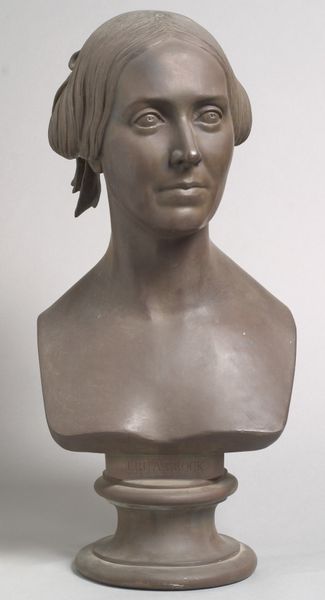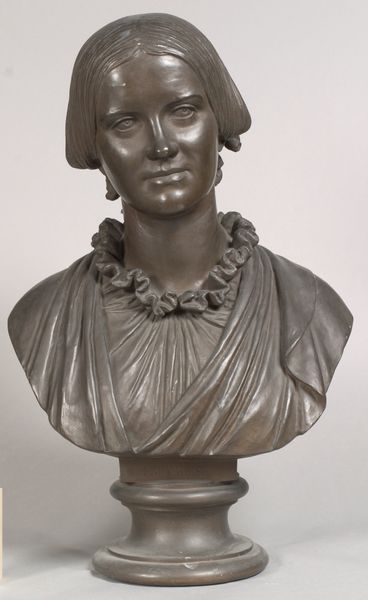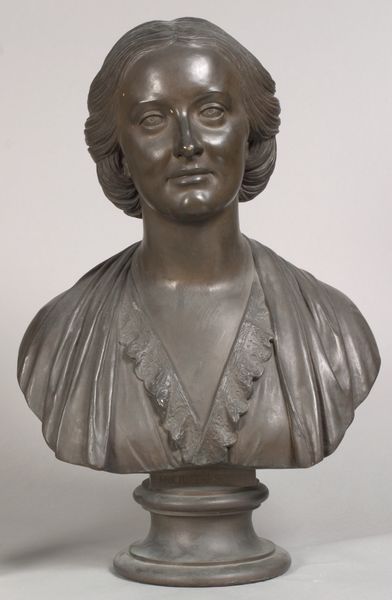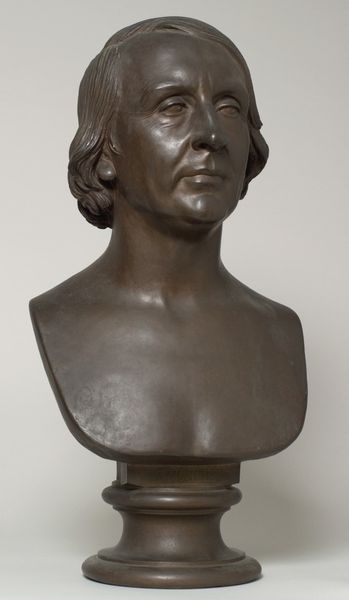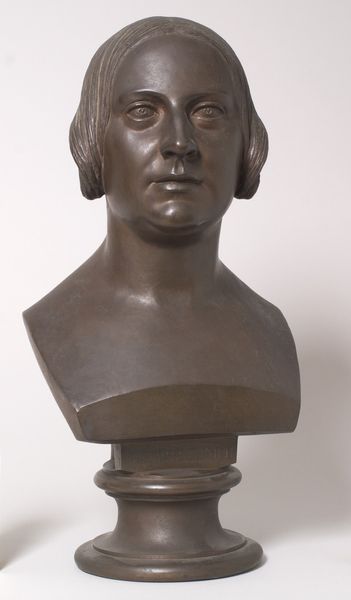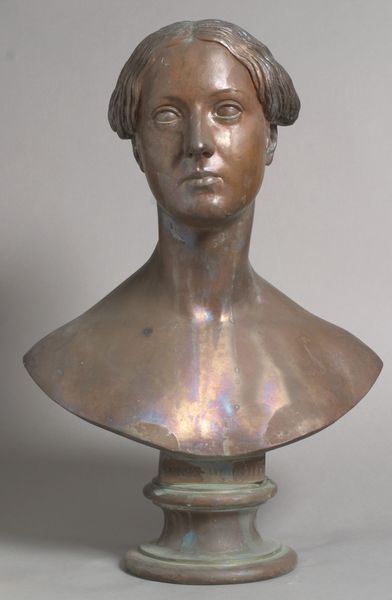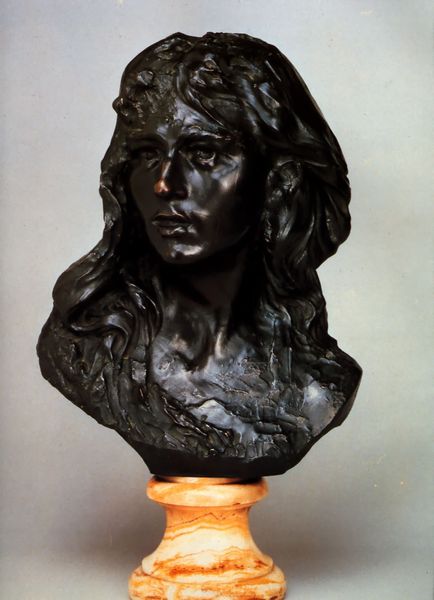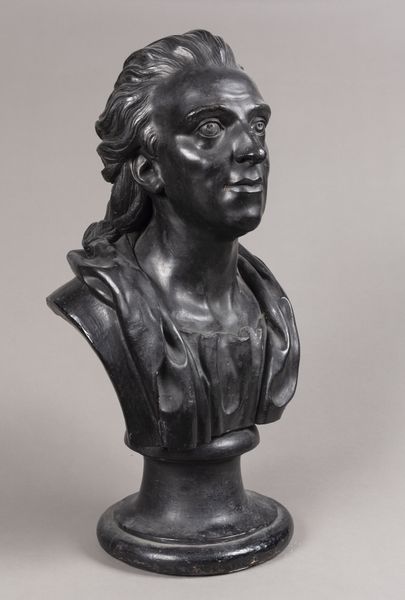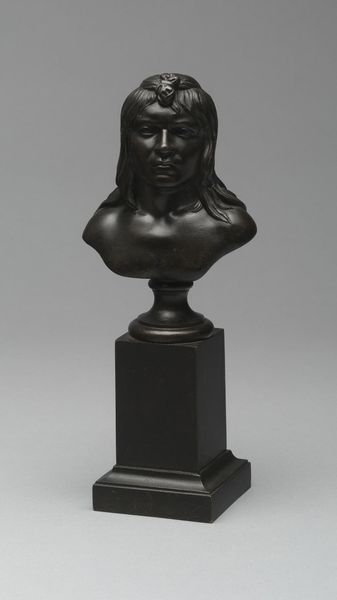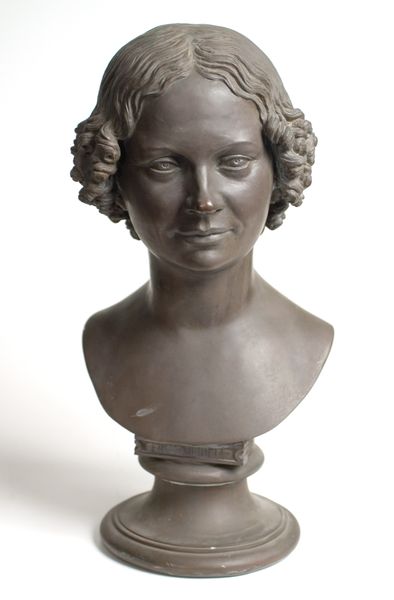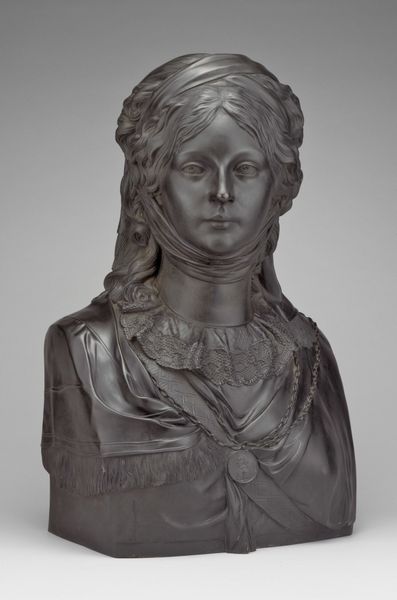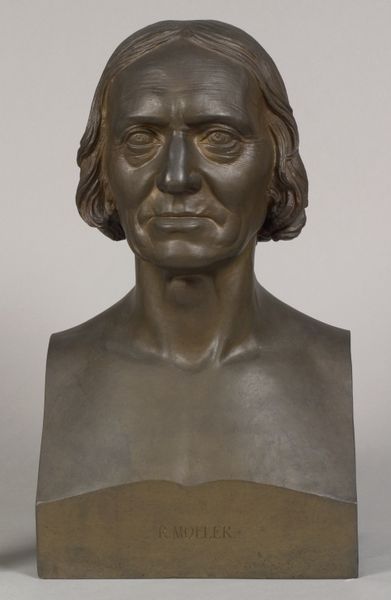
bronze, sculpture
#
portrait
#
sculpture
#
classical-realism
#
bronze
#
sculpture
Dimensions: 58 cm (height) (Netto)
Curator: Before us is H.W. Bissen's "Bolette Puggaard," a bronze sculpture created in 1864 and residing here at the SMK. It’s a strikingly life-like portrait bust. Editor: Yes, the somber cast of the bronze immediately gives it a sense of gravity, almost austerity. I’m drawn to the precise realism, the smooth contours giving way to the rougher textures of the hair and clothing. Curator: Considering the material, bronze was of course meticulously cast, using a lost-wax method involving laborious handiwork in creating molds. Bronze in 19th-century Denmark was readily available due to industrial advancements in mining and casting, democratizing sculpture-making. It allowed Bissen, deeply influenced by neo-classicism and antiquity, to explore and express realistic textures in representing skin and clothing. The production itself speaks volumes about the shifting art market of the time. Editor: Absolutely, we also can't ignore the sitter herself. Bolette Puggaard was not just anyone. Coming from a family of influential merchants and art patrons, she actively engaged with Denmark’s cultural elite, providing critical financial and social support to artists, writers, and intellectuals, even during periods of intense political upheaval within the country and across Europe. This sculpture marks an alliance, the material reflecting stability and status while immortalizing a powerful woman who moved within, but often against, societal constraints. Curator: Precisely. Bolette was herself from a wealthy bourgeois background that was itself built off of trade and new technologies, the production of such a commodity being intrinsically tied to social progress for certain groups and economic exploitation for others. One can understand then why bronze was so ubiquitous a material as Denmark moved towards modernizing its capitalist structures, as seen through this artwork. Editor: Indeed. I think examining the work through both Bissen's production methods, but also Bolette's patronage, allows for broader reflection on not only the role of the patron but also the societal position she and Bissen occupied in 19th-century Danish culture. This sculpture speaks beyond simple likeness, providing instead evidence of complex historical negotiations of art, gender, and social progress. Curator: I concur entirely; analyzing production coupled with Bolette Puggaard’s personal narrative shows art acting as social history manifest. Editor: Agreed; it moves beyond a simple bronze bust and stands as a record of intersecting networks, solidifying status and enabling the artist to practice his craft in a specific context.
Comments
No comments
Be the first to comment and join the conversation on the ultimate creative platform.
